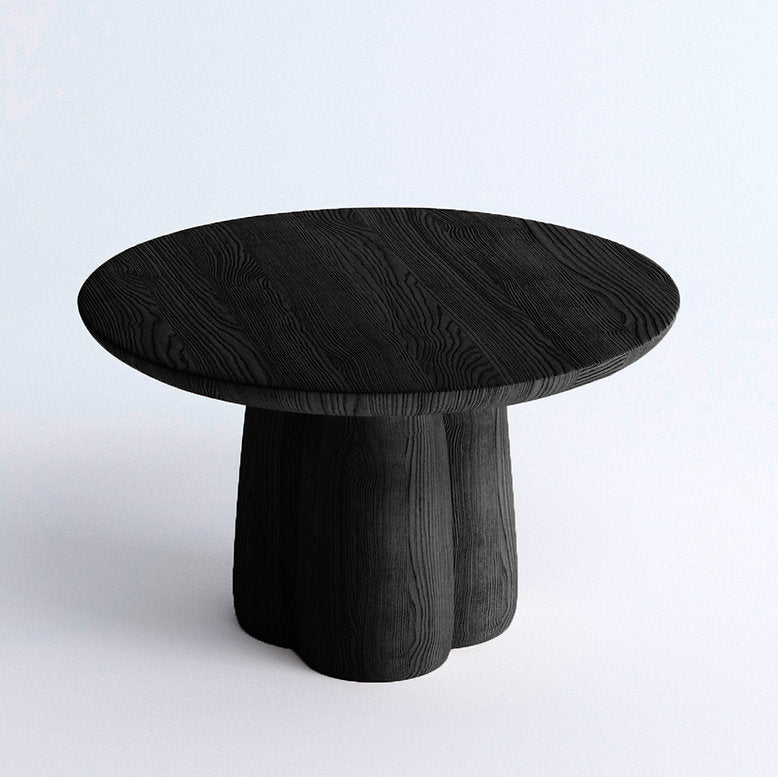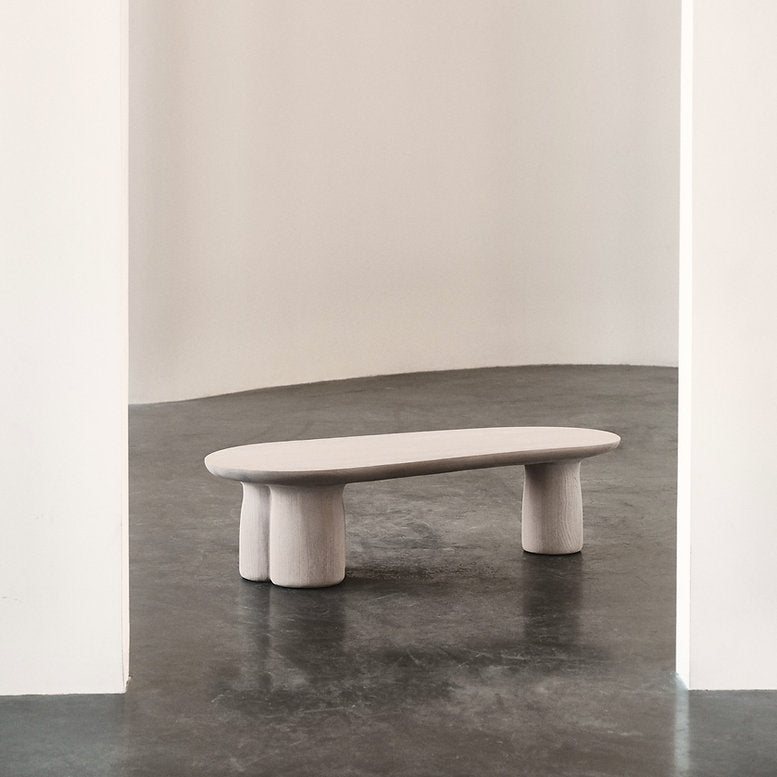In today's interiors, the coffee table functions as both a practical and visual centerpiece. It anchors the seating area, providing space for daily rituals — books, tea, conversation, or quiet reflection. A sculptural coffee table enhances this function through balanced form and material presence. Beyond serving as a surface, it defines circulation, creates visual harmony, and connects furniture pieces into a cohesive composition.
Distinctive Features of Sculptural Coffee Tables
Sculptural coffee tables provide both functionality and aesthetic appeal. A coffee table that is built from pure geometry, yet has soft, rounded edges, will bring architectural tranquility into any space while still feeling warm. Monolithic in form or with soft, layered shapes, these pieces help to anchor the space without overwhelming it. Similarly, they can be placed in the center of a living area to help connect seating arrangements and create a natural point of focus for gatherings, reading, or display.
Sculptural Coffee Tables: Materials and Finishes
Every sculptural coffee table is unique and made from enduring, natural materials. ZTISTA, FAINA’s primary material, is an environmentally friendly clay based mixture of flax fiber, recycled cellulose, wood chips, and biopolymer. It is layered by hand in a manner that retains the maker's gesture, resulting in a “living” surface that is both organic and durable, with an inherent tactile quality.
Other models are made with solid ash or oak, which enhances the natural warmth and depth of the material. The finish remains matte and elemental, highlighting the honesty and authenticity of the material instead of hiding it. Additionally, the tables are made to order and any adjustments to scale, finish or tone can be made to specifically address the spatial and visual balance of a project.
Where to Place a Sculptural Coffee Table in Your Home
Sculptural coffee tables easily fit in many interiors. In a living room, they become the architectural centerpiece of a room – anchoring sofas and armchairs while sourcing understated movement through shape and texture. In lounges, or hotel settings, they provide ample surface area with a gallery-like presence. In bedrooms or reading nooks, smaller tables can act as still companions beside a chair or daybed. Regardless of where they sit, their sculptural shape provides a sense of cohesion and calm to the arrangement.
Benefits of Adding a Sculptural Coffee Table to Your Space
A sculptural coffee table is more than an organizational object for space — it is a defining object. A tactile surface, often textural, absorbs and plays with natural light, generating a sense of depth through the interaction of shadow and touch.
How to Choose the Right Sculptural Coffee Table
When choosing your coffee table, first and foremost consider proportion: the height should sit just below the seat level of your sofa for visual balance and comfort. Select form according to your layout - round or oval tables will soften the lines in smaller spaces while a rectangular or asymmetrical shape will be more structural in larger rooms.
If you want your interiors to feel cohesive, one option would be to use sculptural side or console tables from the same collection as your coffee table. All pieces can be customized in size or finish to ensure an exact fit for your project's mood, proportion, and palette.








